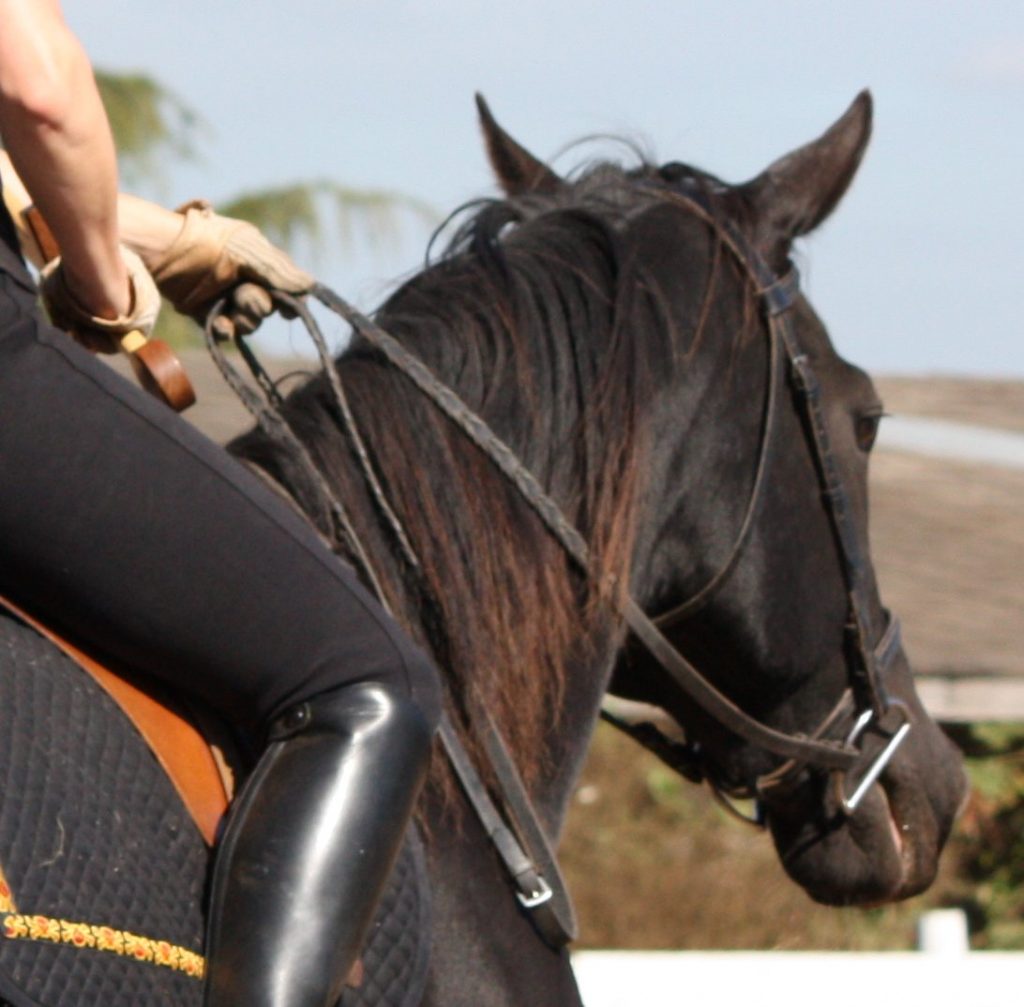Riding Level 2: Adjusting the Reins
When you were a beginner rider, your instructor may have marked a spot on the reins, and said "keep your hands here." We do that because most riders tend to ride with reins far too loose when they start out, and the mantra "shorten your reins" gets old to both students and teachers. In reality, you need to adjust your reins frequently in every ride. In addition, as mounted swordfighters we need to go from two hands on the reins, to one, and sometimes to none and back again, which is why the next item on the Riding 2 checklist is:
4. Adjust reins at walk & trot; switch from two hands to one and back.
Lengthening the Reins
This is the easiest adjustment to make, and is typically done to let the horse stretch her head and neck forward or downward, either as a rest or reward, or to encourage stretching the topline. Simply release the the grip of your thumbs and forefingers and let the reins slide forward through your hands.
This should not be confused with releasing the hands forward, which is done without changing the rein length. 'Giving' with the reins like this can be a small motion done to encourage more impulsion or freedom of movement, or a large release, to free the horse's head completely for jumping or galloping. In both of these cases the reins stay the same length and it is the rider's hand position along the neck that creates slack.
Shortening the Reins
To tighten the reins a small amount you can inch your fingers closer to the bit. However, this is slow, and if you need to make a large adjustment quickly -- say at the gallop between jumps or to take charge of misbehaving horse -- you need a faster solution.
The fastest method of shortening the reins is to hook a rein with the finger of the opposite hand, and move the hands apart. For example to shorten your right rein, grab it with your left index finger and slide your right hand closer to the bit. With practice you can shorten both reins at the same time with this method.
Switching from two hands to one
To switch from two hands to one turn your thumbs, which normally sit on top, to face each other. Place one hand over the other, and take the bottom hand out while you take both reins with the top hand. You will usually need a shorter rein when using one hand, so shorten your reins before perform the switch and check to see that both reins are even when your hand is centred over your horse's neck. (For more on over-handed reining technique see this post.)
Going back to two hands is fairly natural. However, do make sure when you've got one rein in each hand that they are both even, and haven't become twisted in the process.
Practise adjusting your reins frequently, so it becomes smooth and automatic. It's not a skill you want to learn as you're making a rollback turn to a jump, or hurtling towards the quintain!
Upcoming Classes
Cavaliere ClassesSaturdays, 10 & 24 August, 4:00 - 7:30pm
Intro to Mounted Combat
Sunday 7 September, 10:00am - 12:30pm
Mounted Combat WorskhopSunday 7 September, 1:00 - 4:00pm
Carosella 2013
Friday - Sunday, 27 - 29 September
A three day celebration of Mounted Skill at Arms, with workshops and competitions for all levels of skill and experience. Registration now open!
